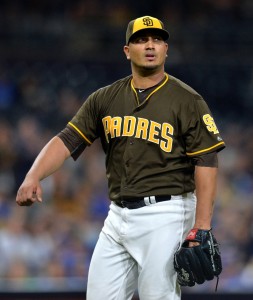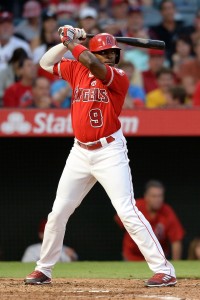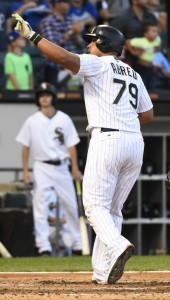We’re bringing back our “Three Needs” series, in which we take a look at the chief issues to be addressed for clubs that have fallen out of contention. We’ve already focused on the Mariners and the Tigers, and now we’ll turn our attention to a White Sox team that’s about to conclude its 11th straight season without a playoff berth. Led by general manager Rick Hahn, the Pale Hose figure to spend the offseason working toward putting a playoff team on the field in 2020. Here are a few things they need to address in order to make that a possibility…
1. Upgrade The Outfield
If we’re to believe fWAR, no team has been worse off in the grass than the White Sox, whose outfielders have combined for a league-low minus-0.3 in that category. Much-ballyhooed rookie left fielder Eloy Jimenez has been the lone bright spot, though he hasn’t been a defensive stalwart. Everyone else has been downright terrible at the plate. The good news is that the White Sox have yet another super prospect, 22-year-old Luis Robert, nearing the majors.
Even if Robert comes up from Triple-A Charlotte early next season and makes an immediate impact, the White Sox will still need at least one more solution in the outfield. The club knew the OF was an issue last offseason, when it made at least a perfunctory effort to sign Bryce Harper, and now that Chicago’s a year closer to ending its rebuild, it should again place significant emphasis on the area during the upcoming winter. While the White Sox went after Harper last offseason, they also reportedly pursued a trade for Dodgers outfielder Joc Pederson, who wound up staying put. He could again be a trade target in a couple months, though, with Marcell Ozuna, Corey Dickerson, Brett Gardner, Yasiel Puig and the defensively questionable Nicholas Castellanos serving as surefire upgrades who could be among the game’s free agents.
2. Improve The Starting Staff
Right-hander Lucas Giolito has turned into a bona fide front-line starter, which is arguably the best news the White Sox have received this season. Too bad they can’t clone him. Giolito aside, Chicago’s staff clearly needs more sure things heading into 2020. Reynaldo Lopez, although promising, has struggled for a large portion of this season. So has Ivan Nova, who paces the team in starts and innings, and is slated to become a free agent over the winter. Rookie Dylan Cease has a ton of potential, but he has endured a difficult start to his major league career. And both Carlos Rodon and Michael Kopech are recovering from recent Tommy John procedures. Rodon had surgery back in May, meaning he certainly won’t be back for the early portion of 2020. Kopech went under the knife a year ago, so the hyped prospect could be a factor toward the beginning of next season. However, Kopech’s resume includes a meager 14 1/3 major league innings.
Chicago’s not known for winning free-agent bidding wars, evidenced by the fact that Jose Abreu’s six-year, $68MM contract from October 2013 still stands as the richest deal in franchise history. Maybe it’s time for the big-market club to buck that trend, though. There’s no reason the White Sox shouldn’t aggressively pursue the sport’s No. 1 soon-to-be free agent, Astros ace and potential AL Cy Young winner Gerrit Cole, who could command more than $200MM on the open market. They should also be in on lesser (but still capable) free-agent arms such as Zack Wheeler and Jake Odorizzi, to name a couple.
3. Shore Up The Right Side Of The Infield
The left side of the White Sox’s infield looks to be in excellent shape. Third baseman Yoan Moncada has turned into the stud the team originally thought it was getting in its 2016 Chris Sale blockbuster with the Red Sox. Adjacent to Moncada, shortstop Tim Anderson may be on his way to a batting title.
Unfortunately for Chicago, the right side of its infield isn’t as well off. Primary second baseman Yolmer Sanchez hasn’t been the answer at his position, while Abreu is slated to hit free agency. In the case of the latter, it seems there’s a solid chance of a new deal coming together. The White Sox and Abreu have made their affinity for one another known on several occasions, and the 32-year-old’s late-season hot streak could further galvanize the team to re-sign him. If not, though, first (and probably designated hitter) will need to be on the White Sox’s to-do list via the free-agent and-or trade markets.
Even more concerns are in the offing at second, though the White Sox will struggle to find a long-term solution there in free agency. Thirty-somethings Howie Kendrick (who has been fantastic this year), Brian Dozier, Starlin Castro, Ben Zobrist, Brock Holt and Jason Kipnis could be short-term targets there. Maybe even Mike Moustakas, a longtime third baseman who has gotten his first MLB experience at the keystone this year. The fact that any of those players would just be a Band-Aid for the White Sox might not be the worst thing in the world, as 22-year-old Nick Madrigal (another of their enviable prospects) progressed to the Triple-A level this season and shouldn’t be far from a big league promotion.
Of course, if the White Sox really want to think outside the box, they could go after a third baseman – be it Anthony Rendon, the premier position player nearing free agency, Josh Donaldson or Moustakas – and move Moncada back to second. Moncada spent the first couple years of his career at the keystone before shifting to third this season.



